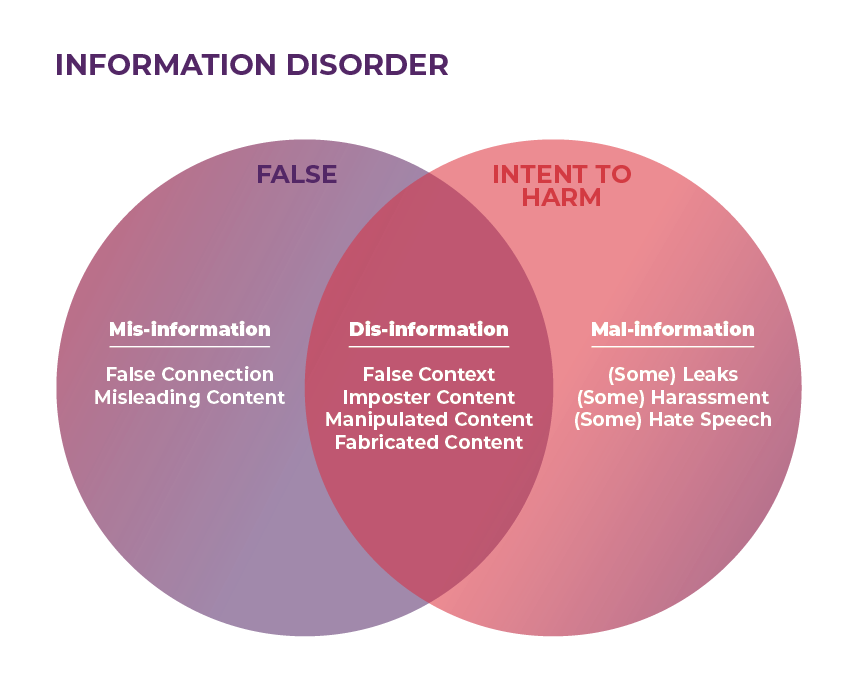Generally, we can divide the actors who share disinformation into two groups, with both their own reasons and tactics:
- State or political actors. They use disinformation for political reasons, are well funded, and can use state of the art technology, such as bots, to amplify their narratives.
- Non-state actors, including extremist groups and corporate actors. They use disinformation for ideological reasons or financial gain, and rely more on human interaction through the use of hate speech and clickbait.
But not all false information can be classified as disinformation. So, it is important to understand the difference between dis-, mis-, and malinformation.
- Disinformation is intended to do harm, it is designed to manipulate. These stories are often entirely made up or use deliberately manipulated content.
- Misinformation is unintentional. It can be a mistake by a journalist, or someone who shares gossip. It can still be harmful, but there is no intent to do harm.
- Malinformation is intended to do harm, but uses factual information. This can be done by exposing someone’s private information or pictures, or by using content out of context.
